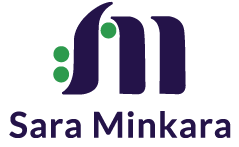Beyond Buzzwords: Diversity, Equity & Inclusion
DEI. D&I. Diversity, Equity, and Inclusion. We see and hear these words and acronyms enough that they can easily lose meaning. And quite honestly in some spaces, they don’t hold much weight, perhaps relegated to annual required workplace seminars. But there is a lot of potential and value in those words. Diversity, equity and inclusion, or DEI, has power far beyond buzzwords and corporate workshops. Rather, genuine investment in DEI has the capacity to shape the trajectory of the world. When we empower and include the diverse talent pool through equitable opportunities for advancement, everyone benefits through enhanced innovation and productivity, lower poverty rates and improved health and employment outcomes, and so much more. The full works! Enticing right?
I’ve always said that inclusion is an adaptive problem that requires adaptive solutions. It is not a quick and easy fix, but an evolving process. Inclusion is the foundation of any successful DEI effort, and empowerment and respect are the heart of successful inclusive practices. A common and formidable obstacle to achieving inclusion is our own mindset, and the perceptions we hold about ourselves, others and the world around us. Our perceptions and biases (good, bad and neutral) manifest from a very early age, with so much of our behavior, including how we view and treat ourselves and others, rooted in those early paradigms. Part of the special challenge is how deeply internalized these notions can be, frequently difficult to even identify, which in turn makes them challenging to confront.
Hence, introducing certain skills like emotional regulation and curiosity through a lens of compassion at an early age can have an exponential effect. It can influence our relationships with success and failure, resilience and openness to the world as children, and ultimately shape our paths as adults. On a grander scale, widespread exposure to emotional skills and compassionate interpersonal approach can impact societal mindsets and systems.
A shift towards integrating Social-Emotional Learning (SEL) into educational curricula is the first step. SEL is “the process through which children and adults understand and manage emotions, set and achieve positive goals, feel and show empathy for others, establish and maintain positive relationships, and make responsible decisions.” The SEL framework consists of the five competencies: self-awareness, social awareness, self-management, relationship skills, and responsible decision-making. Self-reflection is the steppingstone of this framework; it leads to self-awareness and, ultimately, social awareness. By empowering students to unpack their own personal identities, they are equipped to consider and appreciate the differences among their peers. This promotes awareness of and appreciation for the value of diversity and inclusion. It also encourages students to adopt curiosity through a lens of compassion to truly get to know one another. This allows them to engage in difficult conversations, and to learn how each individual person can be heard and supported in a way that ensures they feel included.
SEL is a step in the right direction toward developing an understanding of and appreciation for the values of diversity, equity and inclusion. If we prepare children with those skills and that orientation now, they will carry those values forward, and a new generation of individuals will be able to live and work from a foundation built on DEI concepts. We can move beyond DEI as buzzwords if we put in the work; diversity, equity and inclusion have real value. That investment in human capital, in talent and innovation, can empower today’s youth to build bridges and solve problems that our generation could not. Although there is still time to make that change.


